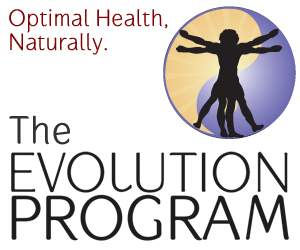Paleo Diet News: Bee Colony Collapses Linked to Insecticides
Honey bees entering a hive. Photo by Björn Appel. Image courtesy of Wikipedia.org
When mentioning factory farms or industrialized agriculture we think of CAFOs (confined animal feeding operations) or acres and acres of wheat, corn and soy. But we rarely consider the impact that these methods of farming have on other creatures in the ecosystem. Because of such short-sightedness we may be damaging a creature that is highly sensitive to environmental change and is crucial to our ability to raise food at all. I refer to the honey bee.
Some years ago I watched a documentary on PBS called “Silence of the Bees” (which you can watch below), that reported on what is called “colony collapse disorder” (CCD). This is an unexplained die off of entire bee hive colonies. This sort of thing has been going on for as long as humans have been keeping bees. But the incidence of CCD has increased dramatically and which makes researchers believe that the cause is something that humans are doing to the environment. But what?
The Nature documentary did not have any firm conclusions as to why the bees were dying off. Several possible hypotheses were put forward. From :
The cause or causes of the syndrome are unknown. In 2007, some authorities attributed the problem to biotic factors such as Varroa mites and insect diseases (i.e., pathogens including Nosema apis and Israel acute paralysis virus). Other proposed causes include environmental change-related stresses, malnutrition, pesticides (e.g.. neonicotinoids such as clothianidin and imidacloprid), and migratory beekeeping. More speculative possibilities have included both cell phone radiation and genetically modified (GM) crops with pest control characteristics. Relatively little attention has been given to the artificial selective breeding of bees for industrial use, the displacement of and stressors on wild bees, and the effect of artificial genetic homogeneity on increased predisposition and uniform susceptibility to disease.[citation needed]
It has also been suggested that it may be due to a combination of many factors and that no single factor is the cause. The most recent report (USDA - 2010) states that “based on an initial analysis of collected bee samples (CCD- and non-CCD affected), reports have noted the high number of viruses and other pathogens, pesticides, and parasites present in CCD colonies, and lower levels in non-CCD colonies. This work suggests that a combination of environmental stressors may set off a cascade of events and contribute to a colony where weakened worker bees are more susceptible to pests and pathogens.” Applying proteomics-based pathogen screening tools in 2010, researchers announced they had identified a co-infection of invertebrate iridescent virus type 6 (IIV-6) and the fungus Nosema ceranae in all CCD colonies sampled. However, subsequent studies have questioned the methodology used in these proteomic experiments.
When I watched the video I was surprised to learn that commercial bee hives were shipped from state to state to pollinate crops. For example, bees that had pollinated blueberries in New England were transported to Florida to pollinate other crops. Surely that is a huge stressor for the bees and had to be a contributor to the bee colony collapses.
But it turns out that researchers may have narrowed down the possible causes to some extent. From the Daily Commercial from Leesburg FL:
…. large commercial beekeepers are having trouble making a living because of an environmental threat. Massive beehive die-offs known as colony collapse disorder have been linked to factory farms and pesticides, according to a recent study at Purdue University.
…. Through contacts with friends and entomologists and pest control experts, Rhodes learned about colony collapses and the effects of “neonics,” or neonicotinoid insecticides. The insecticides are commonly used to coat corn and soybean seeds before planting, and bees bring corn pollen back to their hives to feed young bees, Rhodes said. He says the chemicals disorient bees so they canât find their hives, and also lower their immune system.
The sticky insecticide coatings are mixed with talc to keep the seeds flowing freely in vacuum planter systems, according to the Purdue study. But excess talc is released during planting. The scientists found levels of neonics in corn pollen that would kill bees if sufficient amounts were consumed, and also found extremely high levels of the insecticides in the excess talc.
“We know that these insecticides are highly toxic to bees; we found them in each sample of dead and dying bees,” Christian Krupke, associate professor of entomology, said in a Purdue University News Service report.
“Given the rates of corn planting and talc usage, we are blowing large amounts of contaminated talc into the environment,” Krupke added. “The dust is quite light and appears to be quite mobile.”
Rhodes specifically blames German chemical giant Bayer for making neonics, noting that products like Bayer Advanced kill insects for 12 months.
So, our demand for cheap food is killing off the one of the most important creatures responsible for the continued existence of these foods. The use of pesticides is rampant. This not only affects commercial hives but other bee colonies.
Rhodes says there are no safe havens, no
unexposed bees, because pesticides are sprayed everywhere, over citrus groves, golf courses, nurseries. The implication is that these insecticides pose a threat to the food supply, and possibly humans. Most fruit, nut and vegetable crops depend on honeybees for pollination, Krupke said.
“Itâs on every damn thing you eat,” Rhodes said.
So what can we do? Support local organic farmers and honey producers. Eat seasonally. Buy pastured and grass-fed animal products. No pesticides will be involved since no grain is raised to grow the feed crop. If possible, keep a garden with fruit trees, vegetables and even a flower garden. Give your local bees a safe place to come collect pollen. Support small and hobbyist bee keepers. Let your local government know that you approve of bee keeping in your neighborhood. By following some of these steps we reduce the demand for conventionally raised produce, we send a message to the farmers that we want food raised with minimal use of chemical insecticides and pesticides and we help ensure the continued existence of the honey bee. Can the bee colony collapses be stopped? Only time will tell.
What are you doing that you think is making a difference? Are you buying organic food? Have you gone as far as being a bee keeper yourself? Please share your comments below. And please share this on Facebook and Twitter. Thank you for visiting!





